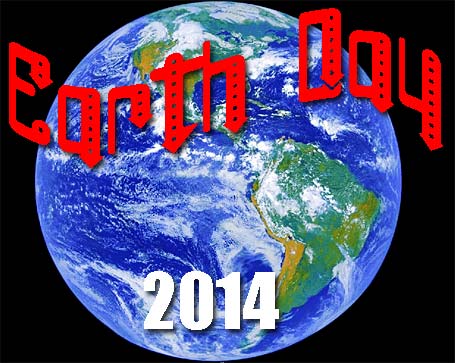
Since tomorrow is Earth Day 2014, I thought it only fitting to write a short history of this special day. What’s the purpose of celebrating Earth Day on April 22 every year? How did it start? These are questions you might be interested in if you are a keen observer of the environment. This celebration is not to be confused with a similar event, the equinoctial Earth Day which is celebrated around March 20 every year.
Well, the idea of the April 22 Earth Day is said to have evolved over a period of 7 years, which began in 1962. For very many years, individuals had been going about the politics of the world while ignoring issues related to the environment they are living in. It was not until November 1962, when the issue was brought into focus, thanks to the founder of this special day, Democratic U. S. Senator Gaylord Nelson (from Wisconsin).
The idea was to convince President Kennedy (who was the United States President at the time), to go on a national environment conservation tour. At the time, Senator Nelson flew to Washington to discuss the tour with Attorney General Robert Kennedy.
Both the President and the Attorney General liked the idea very much. So the President started his 5-day journey across 11 states, with the aim of recognizing Earth Day. This trip was dubbed ”Conservation Tour”, and it happened in the year 1963. However, the tour didn’t succeed in putting the issue onto the limelight of the national political agenda.
But Senator Nelson didn’t give up on the struggle. Instead, he went ahead and talked to 25 more states about the issue. It was evident that the environment was degrading at a fast pace. America’s citizens were noticing this but the political establishment had not. At this time, most politicians simply refused to recognize it.
After the President’s tour, Senator Nelson was even more determined. He still had hope that the issue would somehow find its way onto the National political agenda. Six years later, he set out on a national conservation tour, speaking to people about the idea on a hot summer.
Senator Nelson traveled to champion for environmental conservation while an anti-Vietnam war demonstration was actively being carried out. It was given the name ”teach-ins”, and it had spread in college campuses all across the states. But then Nelson thought this was a good opportunity to organize a huge grassroots protest over the issues that were facing the environment.
Though it was a big gamble because he was taking advantage of the situation to force issues onto the political agenda of the country, his idea was bound to succeed because he was channeling the energy of students to rightful use.
Nelson organized a conference in Seattle in 1969 to announce that there would be a countywide demonstration on behalf of the environment. That’s the time when the announcement started spreading like wild fire. The media was all over it, so the news about the conference was taken serious by the masses.
Because of the grassroots factor, the idea was able to take off successfully this time round. Millions of people showed up on college campuses, secondary schools and communities across the nation. Since that time it has spread to 192 different nations and is celebrated by over 1 billion people each year.
Leave a Reply
You must be logged in to post a comment.